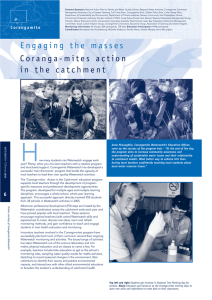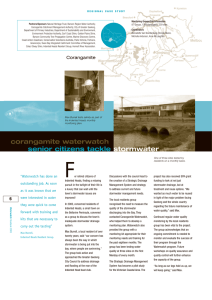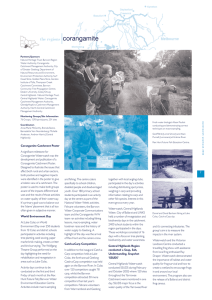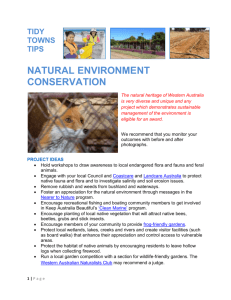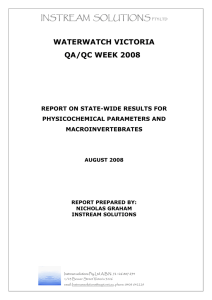Document 13168424
advertisement
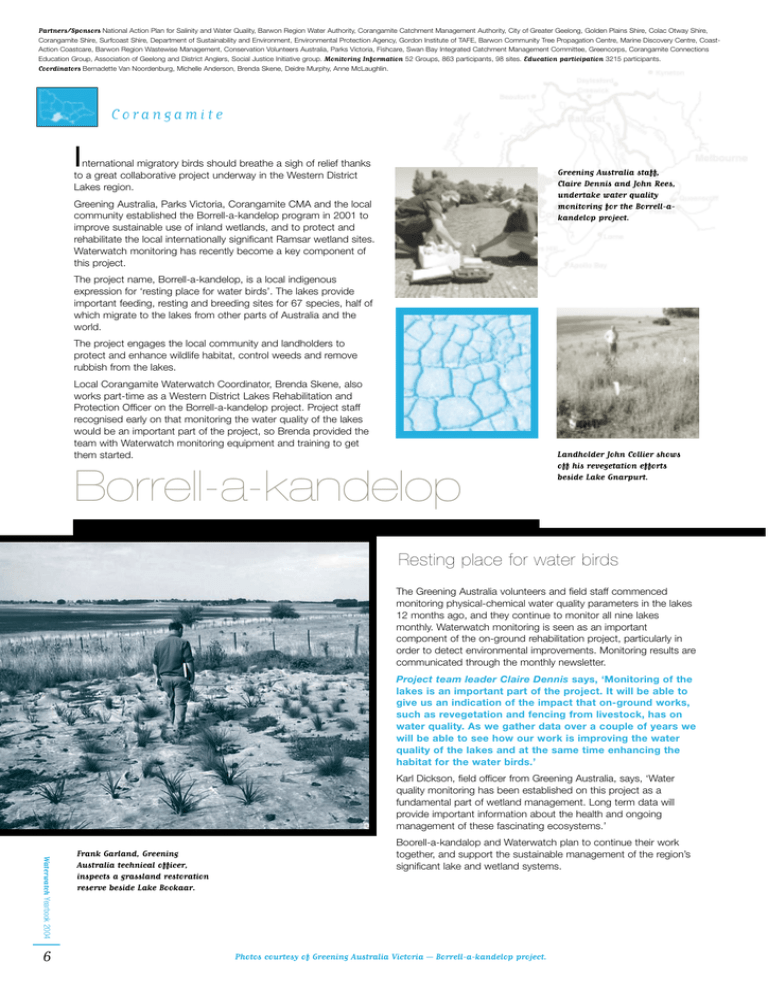
Partners/Sponsors National Action Plan for Salinity and Water Quality, Barwon Region Water Authority, Corangamite Catchment Management Authority, City of Greater Geelong, Golden Plains Shire, Colac Otway Shire, Corangamite Shire, Surfcoast Shire, Department of Sustainability and Environment, Environmental Protection Agency, Gordon Institute of TAFE, Barwon Community Tree Propagation Centre, Marine Discovery Centre, CoastAction Coastcare, Barwon Region Wastewise Management, Conservation Volunteers Australia, Parks Victoria, Fishcare, Swan Bay Integrated Catchment Management Committee, Greencorps, Corangamite Connections Education Group, Association of Geelong and District Anglers, Social Justice Initiative group. Monitoring Information 52 Groups, 863 participants, 98 sites. Education participation 3215 participants. Coordinators Bernadette Van Noordenburg, Michelle Anderson, Brenda Skene, Deidre Murphy, Anne McLaughlin. Corangamite I nternational migratory birds should breathe a sigh of relief thanks to a great collaborative project underway in the Western District Lakes region. Greening Australia staff, Claire Dennis and John Rees, undertake water quality monitoring for the Borrell-akandelop project. Greening Australia, Parks Victoria, Corangamite CMA and the local community established the Borrell-a-kandelop program in 2001 to improve sustainable use of inland wetlands, and to protect and rehabilitate the local internationally significant Ramsar wetland sites. Waterwatch monitoring has recently become a key component of this project. The project name, Borrell-a-kandelop, is a local indigenous expression for ‘resting place for water birds’. The lakes provide important feeding, resting and breeding sites for 67 species, half of which migrate to the lakes from other parts of Australia and the world. The project engages the local community and landholders to protect and enhance wildlife habitat, control weeds and remove rubbish from the lakes. Local Corangamite Waterwatch Coordinator, Brenda Skene, also works part-time as a Western District Lakes Rehabilitation and Protection Officer on the Borrell-a-kandelop project. Project staff recognised early on that monitoring the water quality of the lakes would be an important part of the project, so Brenda provided the team with Waterwatch monitoring equipment and training to get them started. Borrell-a-kandelop Landholder John Collier shows off his revegetation efforts beside Lake Gnarpurt. Resting place for water birds The Greening Australia volunteers and field staff commenced monitoring physical-chemical water quality parameters in the lakes 12 months ago, and they continue to monitor all nine lakes monthly. Waterwatch monitoring is seen as an important component of the on-ground rehabilitation project, particularly in order to detect environmental improvements. Monitoring results are communicated through the monthly newsletter. Project team leader Claire Dennis says, ‘Monitoring of the lakes is an important part of the project. It will be able to give us an indication of the impact that on-ground works, such as revegetation and fencing from livestock, has on water quality. As we gather data over a couple of years we will be able to see how our work is improving the water quality of the lakes and at the same time enhancing the habitat for the water birds.’ Karl Dickson, field officer from Greening Australia, says, ‘Water quality monitoring has been established on this project as a fundamental part of wetland management. Long term data will provide important information about the health and ongoing management of these fascinating ecosystems.’ Waterwatch Yearbook 2004 6 Frank Garland, Greening Australia technical officer, inspects a grassland restoration reserve beside Lake Bookaar. Boorell-a-kandalop and Waterwatch plan to continue their work together, and support the sustainable management of the region’s significant lake and wetland systems. Photos courtesy of Greening Australia Victoria – Borrell-a-kandelop project.
